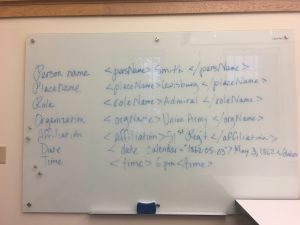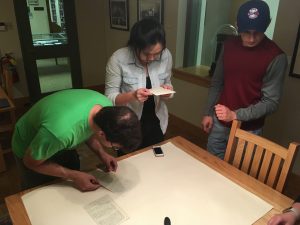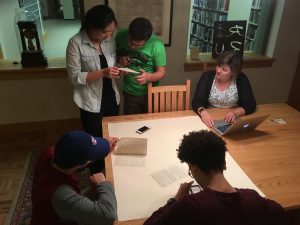Ignorance, in the realm of digital scholarship, is not taking on a project too large, or asking a question too difficult to answer. Instead, ignorance is allow yourself to believe a project is perfect.
As I talked through project ideas with library staff this week, the main goal of writing my project charter remained the same: seek to answer a question you would like to see solved, and worry about the details later. After a week of struggle, I am proud to share my first official proposed project summary:
“Hockey is undeniably old, but that doesn’t mean the game isn’t constantly advancing. In recent history, play has become quicker, and strategy has changed immensely, but the goal of each team year in and year out has remained the same: win the Stanley Cup. The Stanley Cup is the championship trophy of North America’s National Hockey League (NHL), widely regarded as the best hockey league in the world. Each of the 30 current NHL teams will do anything to gain a competitive edge over their opponents. The newest arms race in the world of sports: advanced data analysis. But answering the question: “What does a team have to do to win?” is far from simple.
This project is intended to compare the performance of each NHL team during the 2016-2017 regular season, and further, during the 2017 Stanley Cup Playoffs. Through regression and correlation analysis, the project will first identify key factors and metrics involved in constructing a successful NHL roster, in both the regular season and the playoffs. Though similar, I expect the main factors contributing to success in these two realms will differ, leading to interesting decisions for team management when analyzing a team’s potential.
Then using this data, a model will be created to predict a team’s success in both the regular season and playoffs. This ultimate goal is an interactive model that allows fans, players, and general managers the ability to track their teams projected success given roster moves, player injuries, line shuffling, etc. Using simple inputs (the metrics determined to be most influential in the first portion of the project), the model will graph a team’s projected future performance in terms of regular season wins and playoff wins, player scoring, and goalie performance. This interface will ensure that even the most casual hockey fans can understand the purpose of the model, without having to input or output complex metrics. However, the implications of such a model could involve high-level personnel decisions. Thus, this project will appeal to a wide range of individuals.
This outwardly simple model will cater to fans and hockey professionals alike, while providing statistically backed predictions of team performance. The goal is to identify the building blocks needed to create a contender of a team, and then allow fans and hockey professionals to fiddle with a team’s makeup to identify the best strategy for any NHL team to improve their season predictions. This will allow complex analysis to be performed on any team, by anyone, with Internet access. Such as tool has yet to be created, but this summer, that will change.”
Far from perfect? Sure. A project I can’t wait to begin? Absolutely.






Recent Comments